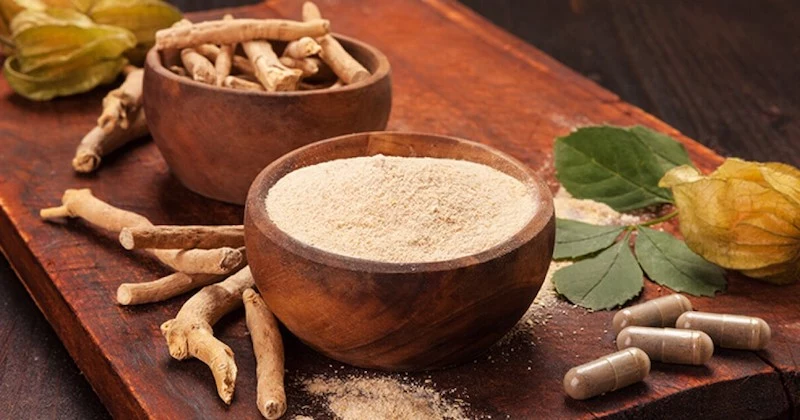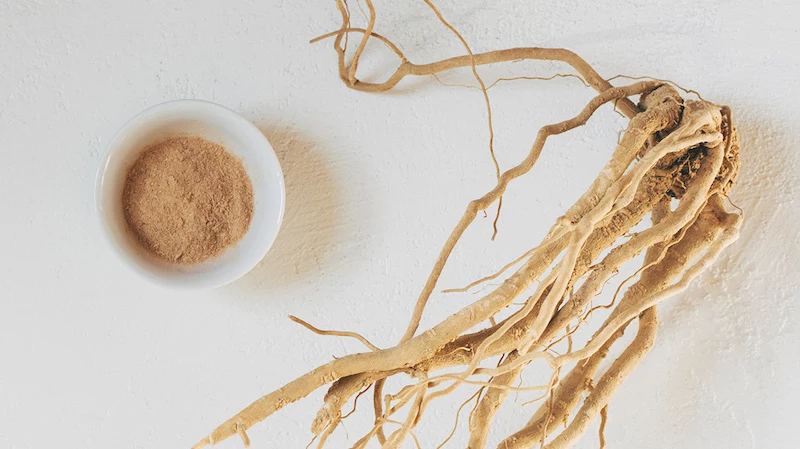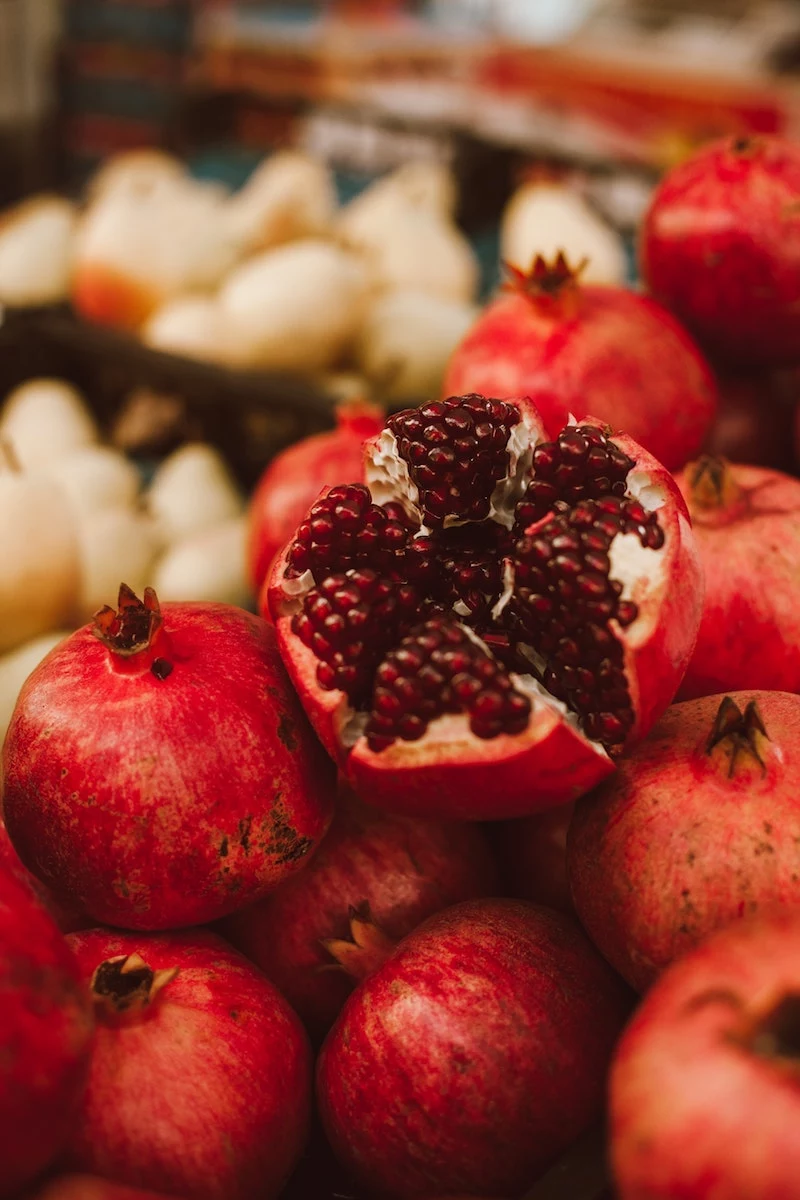The Real Deal on Ashwagandha: A Practical Guide Before You Buy
After spending years helping people navigate the world of herbal supplements, I’ve seen a lot of plants have their 15 minutes of fame. But few have the genuine staying power of Ashwagandha. It seems to be in everything lately, from fancy lattes to glossy supplement bottles. Honestly, though, this isn’t some new wellness trend; it’s a seriously powerful plant with a rich history in Ayurveda, the traditional wellness system of India.
In this article
My goal here isn’t to sell you on a miracle. It’s to give you the honest, practical info I’ve gathered from real-world experience. I want you to know how to use it safely, what to look for in a quality product, and how to respect its strength.
Even the name tells you a lot. In Sanskrit, ‘Ashva’ means horse and ‘Gandha’ means smell. And yes, the fresh root has a very distinct, earthy, almost sweaty scent… a bit like a horse. This isn’t a bad thing! In fact, that potent smell is the first thing I check for in a bag of high-quality, organic Ashwagandha powder. It’s a sign of freshness and vitality. If it just smells like dust, the good stuff is gone.

First, What Is This Stuff, Anyway?
Before we get into uses, you have to understand one word: adaptogen. It gets thrown around a lot, but what does it actually mean?
Think of your body’s stress response system (the HPA axis) as an internal command center. When you’re stressed—whether it’s a work deadline or a physical threat—it releases cortisol, your main stress hormone. This is great for survival; it sharpens your focus and gets you ready for action. In a healthy cycle, cortisol is high in the morning to wake you up and then slowly drops during the day so you can sleep.
But modern life is a different beast. We’re dealing with constant, low-level stress, which can mess up that whole system. You might feel “wired but tired” at night, where your mind is racing but your body is exhausted. Or maybe you feel totally drained in the morning and can’t drag yourself out of bed. That’s where adaptogens step in.

An adaptogen like Ashwagandha doesn’t just block or boost one thing. It helps your body adapt by acting like a smart thermostat for your stress response. It can help lower cortisol when it’s too high, but it can also support your body when you’re depleted. It’s a balancer. This is why one person might take it and feel more energized, while their friend feels calmer. The herb is literally responding to what their individual body needs.
A Buyer’s Guide to Quality Ashwagandha
The success you have with Ashwagandha is almost entirely dependent on the quality of the product you buy. Seriously, not all supplements are created equal, and the market is flooded with options. Here’s what I tell people to look for to make a smart choice.
Root vs. Leaf: A Crucial Difference
Traditionally, it’s all about the root. The root of the plant contains the complex blend of active compounds (called withanolides) that deliver those classic adaptogenic benefits for stress, sleep, and energy. Almost all of the historical use and modern research is based on root extracts.

Lately, you might see extracts made from the leaves. These are often cheaper to produce and are high in one specific compound, Withaferin A. While that compound has some interesting effects in a lab, it can also be toxic to cells at higher concentrations. For general, safe, long-term support, I always, ALWAYS recommend a product made from the root only. The leaves just don’t have the same long track record of safety.
KSM-66 vs. Sensoril: Which Extract is Right for You?
Walking down the supplement aisle, you’ll see these two names pop up a lot. They are not the same, and picking the right one for your goals makes a huge difference. Here’s the simple breakdown:
Choose KSM-66 if…
- You feel burned out but still need to be sharp and focused during the day.
- You’re looking for support with physical performance and recovery from exercise.
- Your main goal is to build resilience to daytime stress without feeling drowsy.
KSM-66 is a highly concentrated extract made only from the root. It’s standardized to contain at least 5% withanolides and is known for supporting energy and cognitive function. By the way, the traditional process for this extract involves milk, but it’s removed from the final product. A lot of brands now offer certified vegan versions, so just check the label if that’s important to you!

Choose Sensoril if…
- You feel “wired and tired,” especially at night.
- Your primary struggles are with anxiety and an overactive, racing mind.
- You need help winding down and improving your sleep quality.
Sensoril is an extract made from both the root and the leaf. This combination means it’s standardized to a higher percentage of withanolides (typically 10%) and tends to be much more calming and sedating. It’s great for sleep issues, but it might be too relaxing for some people to take during the day.
Don’t Forget Good Ol’ Whole Root Powder
This is the most traditional way to take it—simply the dried, ground-up root. It’s not a concentrated extract, so the effects are often more subtle and build up over time. The taste is… an experience. It’s quite bitter and earthy. But if you don’t mind that, it’s a fantastic and affordable way to connect with the herb in its original form. A typical dose is higher, around 1 to 2 teaspoons a day.

Good to know: Expect to pay around $15-$25 for a good-sized bag of organic root powder. A one-month supply of high-quality capsules (like KSM-66 or Sensoril) will usually run you between $20 and $35.
Sourcing and Purity: This Part Is Non-Negotiable
Heads up! Ashwagandha is a plant that can soak up heavy metals from the soil it grows in. Because of this, third-party testing isn’t just a nice-to-have, it’s essential.
I only recommend products from companies that are transparent about their testing. Look for a Certificate of Analysis (CoA), which proves the product has been screened for heavy metals, microbes, and pesticides. And always go for USDA Organic to avoid synthetic junk.
Quick tip: How to Vet a Brand in 2 Minutes
- Check the Website: Look for a ‘Quality’ or ‘Testing’ page. Reputable brands are proud to show off their standards.
- Just Ask: Can’t find it? Email their customer service and ask, “Can you provide a Certificate of Analysis for your current batch of Ashwagandha?” A good company will send it right over. If they get weird about it, that’s a red flag.

How I’ve Seen It Work in Real Life
I use Ashwagandha to help people build back their foundation, not just to slap a bandage on a symptom. Here are a few ways it can be a game-changer.
Tackling Stress and Burnout
This is Ashwagandha’s bread and butter. I once worked with a project manager who was deep in burnout. She was exhausted but couldn’t sleep, irritable, and completely overwhelmed. We started her on a 300 mg dose of a KSM-66 root extract every morning. After about a month, the change was incredible. She told me she was waking up before her alarm feeling refreshed, the afternoon sugar cravings had vanished, and she could finally handle a stressful meeting without feeling her heart pound out of her chest. She felt like she had her foundations back.
Getting Better, Deeper Sleep
Many people reach for Ashwagandha hoping for a sleeping pill, but that’s not how it works. It doesn’t knock you out. Instead, it quiets the mental chatter and physical tension that keep you from drifting off naturally. For this, I love a traditional approach.

My Go-To Calming Nightcap Recipe: About an hour before bed, gently warm up 8 oz of oat milk or whole milk (don’t boil it). Pour it into a mug and whisk in 1 teaspoon of Ashwagandha root powder, ½ teaspoon of cinnamon, and 1 teaspoon of maple syrup or honey. The ritual itself is incredibly calming, and it’s a gentler way to ease your body into a state of rest.
Boosting Physical Performance
For the athletes and weekend warriors out there, this herb can be a great training partner. Intense exercise is a stress on the body, and Ashwagandha helps moderate that stress response, which can lead to better recovery and less muscle soreness. Consistent daily use (around 500-600 mg of a root extract) is what seems to work best, not just taking it right before a workout.
Important Considerations (Please Read This Part Carefully)
Ashwagandha is an amazing ally, but its power needs to be respected. It’s not for everyone, and it’s important to be honest about its limitations.

Hormonal Health
- For Men: Under chronic stress, the body sometimes prioritizes making cortisol over testosterone. By helping to manage cortisol, Ashwagandha may support healthy testosterone levels that are already in the normal range. To be clear, it is NOT a replacement for testosterone therapy.
- For Women: I’ve found it can be really helpful for women in perimenopause who are dealing with stress-related mood swings and sleep issues. It supports the adrenal glands, which provides a more stable foundation during that time of change.
A CRITICAL WARNING ON THYROID HEALTH: This is a big one. Ashwagandha can increase thyroid hormone levels. For someone with an overactive thyroid (hyperthyroidism) or an autoimmune thyroid condition like Hashimoto’s, this can be a serious problem. If your immune system is already attacking your thyroid, stimulating it further can make things worse. I never recommend Ashwagandha for these conditions without close supervision from a doctor.
Safety First: When to Avoid Ashwagandha
Seriously, do NOT take Ashwagandha if you:

- Are pregnant or breastfeeding. It’s just not considered safe, period.
- Have an autoimmune condition like rheumatoid arthritis, lupus, MS, or Hashimoto’s. It can stimulate the immune system, which may trigger a flare-up.
- Have hyperthyroidism. As mentioned above, it can make the condition worse.
- Are sensitive to the Nightshade family. Ashwagandha is in the same family as tomatoes and peppers. If you have a known sensitivity, you might react to it.
- Are scheduled for surgery. Stop taking it at least two weeks before surgery, as it can interfere with anesthesia and affect blood sugar and blood pressure.
Side Effects & Drug Interactions
Even for people who can safely take it, high doses on an empty stomach can sometimes cause digestive upset. It can also potentially interact with medications for thyroid, blood sugar, blood pressure, as well as immunosuppressants and sedatives. The smart move? Talk to your doctor or a qualified herbalist before starting, especially if you have any health conditions or take prescription meds.

How to Take It: Dosing and Cycling
Getting the dose right is key. Here are some general guidelines:
- Whole Root Powder: 3–6 grams per day (about 1-2 teaspoons), often split between morning and evening. Mix it into smoothies, oatmeal, or that warm milk drink.
- Standardized Extract Capsules: A common dose is 300–600 mg, once or twice a day. Start low and see how you feel.
- Tincture (Liquid Extract): A typical dose might be 2–4 milliliters, 2-3 times a day. (Heads up: that’s usually 1-2 full droppers, but always check the label on your specific bottle!).
Finally, I don’t recommend taking powerful adaptogens forever without a break. I usually suggest a cycle, like taking the herb for 6-8 weeks, then taking a 1-2 week break. This gives your body a rest and keeps it responsive.
Remember, Ashwagandha isn’t a quick fix like caffeine. Its effects are cumulative and build over weeks. It’s a slow, deep-acting ally that helps rebuild your body’s resilience from the ground up. When you choose a quality product and use it with respect, it can be a truly profound tool for navigating the pressures of modern life.

Inspirational Gallery


A key principle: Start low and go slow. The temptation is to go for the high-dose capsules right away, but this can lead to digestive upset or drowsiness. Begin with a smaller dose, around 250-300mg per day, and observe how your body feels for a week before considering an increase. It’s about building a relationship with the plant, not overwhelming your system.

Choosing your form of Ashwagandha depends on your lifestyle. Each has its own character:
- Powder: The most traditional and cost-effective form. Its earthy, bitter taste can be blended into smoothies or warm drinks. It offers the most flexibility for dosing.
- Capsules: Perfect for those who dislike the taste or want convenience. They provide a precise, pre-measured dose. Look for brands like Gaia Herbs or Pure Encapsulations that specify the withanolide content.
- Tincture: A liquid extract that is absorbed quickly. A few drops under the tongue or in water is all you need. It’s potent and easy to carry with you.

A 2019 clinical trial published in the journal Medicine found that individuals taking a standardized Ashwagandha extract for 60 days had significantly reduced levels of cortisol—the body’s primary stress hormone—compared to the placebo group.

When to take it: Morning or Night?
This is a common question, and the answer is: it depends on your goal. Because Ashwagandha is an adaptogen, it doesn’t just sedate you. Taken in the morning, it can help manage daytime stress and promote calm focus without drowsiness. Taken in the evening, it can help quiet a racing mind and prepare the body for restful sleep. Experiment to see what timing works best for your body’s unique rhythm.

KSM-66®: This is a patented, full-spectrum extract made exclusively from the root. It’s one of the most researched forms and is often associated with improving energy, endurance, and cognitive function.
Sensoril®: This extract is made from both the root and the leaves of the plant. It’s standardized to have a higher concentration of specific bioactives (withanolide glycosides), and is often chosen for its pronounced calming and sleep-promoting effects.
For all-day balance, KSM-66® is a great start. For targeted evening relaxation, Sensoril® might be more suitable.

- A more restorative and peaceful sleep.
- A comforting ritual to signal the end of a busy day.
- A delicious way to mask the herb’s strong, earthy flavor.
The secret? A simple Ashwagandha ‘Moon Milk’. Gently warm a cup of oat or almond milk, then whisk in half a teaspoon of Ashwagandha powder, a pinch of cinnamon, a dash of nutmeg, and a small drizzle of maple syrup or honey. Sip slowly 30-60 minutes before bed.

Where your Ashwagandha comes from matters. Since it’s a root, it can absorb substances from the ground it grows in, including heavy metals. Always opt for products that are certified organic (look for the USDA Organic seal or equivalent). This ensures the soil is free from prohibited pesticides and synthetic fertilizers, giving you a cleaner, safer final product. Brands like Organic India pride themselves on regenerative organic farming practices.

In its native Ayurvedic tradition, Ashwagandha is revered as a Rasayana.
This Sanskrit term means much more than just a ‘stress-reducer’. A Rasayana is a substance that promotes longevity, revitalizes the body, and enhances ‘Ojas’—the essence of vitality and immunity. It’s seen as a foundational tonic for preserving youthfulness and building resilience from the inside out, a perspective that goes far beyond a quick fix for a stressful day.
While generally safe, Ashwagandha isn’t for everyone. It’s crucial to consult a healthcare professional before starting, especially if you:
- Are pregnant or breastfeeding.
- Have an autoimmune condition like rheumatoid arthritis or lupus.
- Are taking medication for a thyroid condition.
- Have a scheduled surgery, as it may interact with anesthesia.










